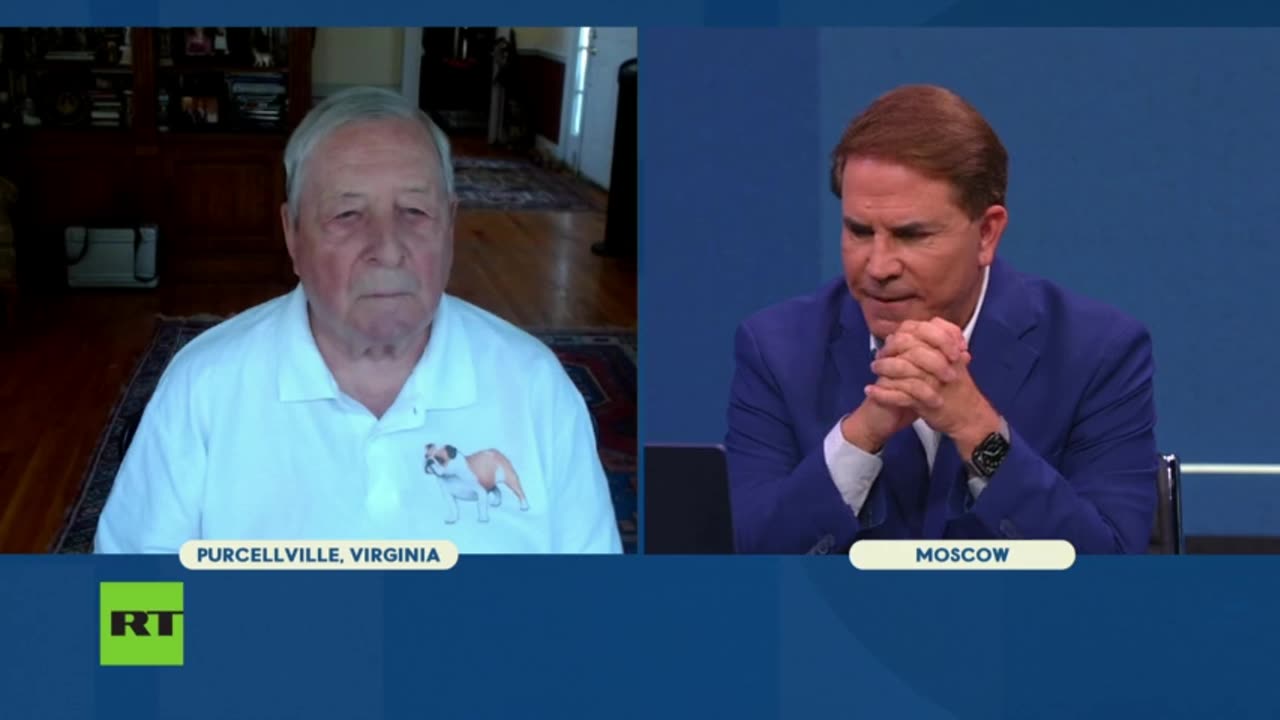Premium Only Content

America: A Giant with Feet of Clay
In the latest episode of RT’s Sanchez Effect, Tehran University professor Mohammad Marandi says Trump can’t be trusted – and that it is Iran that taught Israel and the US a lesson.
In the second part of the program, former CIA officer Phil Giraldi exposes how the US Intelligence Community feeds lies to American Presidents to make Washington’s policies more convenient for those who gain from wars.
U.S. Backing Israel Against Iran: A Giant with Feet of Clay
2 days ago — U.S. Backing Israel Against Iran: A Giant with Feet of Clay ... Professor of Political Science; Director the China Institute of Fudan University.
Today is June 19, I’m in St. Petersburg, Russia, attending the St. Petersburg International Economic Forum. This forum covers a wide range of topics—politics, economics, and society—but the recent conflict between Israel and Iran is on everyone’s mind. Although the agenda was set long ago and doesn’t directly address this issue, it has been touched upon in several sessions. So, I’ll share some impressions from yesterday’s meetings.
First, in several forums yesterday, people mentioned that this conflict has unfolded differently from what many initially predicted. It started with Israel launching a surprise attack, clearly gaining the upper hand, but gradually, Iran’s resilience has become evident.
In particular, Israel’s “Iron Dome” defense system now seems unable to cope with saturation-style bombardments. Recent developments show that Iran, which previously retaliated at night, is now striking during the day. For the first time, ordinary Israelis seem to be feeling the terror of war. In the past, they thought destruction like what has happened in Gaza could only happen to others, but now they’re experiencing that fear themselves. I think this is a profound lesson for Israeli citizens. Israel has fought so many wars— in most cases preemptive strikes. against Syria, Lebanon, Gaza, and so on—but there hasn’t been a strong anti-war movement among its people. There’s been some, but not significant. There should be a more powerful anti-war movement within Israel to stop a regime that completely disregards so many human rights, massacring civilians in Gaza, including many women and children. There should be no place for such violation of basic humanity under any international law.
Today, we also saw the top Chinese leader spoke with his Russian counterpart over phone. President Xi emphasized two key points: first, parties to the conflict should cease fire, Israel in particular, should take the lead in cease fire and ending hostilities; second, the major countries with special influence in the region must work to deescalate tensions rather than adding fuel to the fire. I think this perspective is very important. Putin made a critical point, saying that Israel is planning to attack Iran’s nuclear facilities, which could lead to the danger of nuclear radiation. This is something the whole world must call to stop.
From the perspective of analyzing warfare, there’s a key concept in military studies: strategic depth. Clearly, a country like Israel, compared to a country like Iran, lacks strategic depth. Israel’s area is about 25,000 square kilometers, smaller than China’s Hainan Island, or roughly the size of two Tianjin cities combined. In contrast, Iran’s area is nearly 70 times larger, disproportionately larger.
The lack of strategic depth becomes critical in war. Israel initially launched powerful pre-emptive strike by relying on its missile defense system to intercept incoming missiles, but now it seems Iran’s missiles are overwhelming that system, and the Israeli offensive risks a total collapse. The question now is whether the U.S. will intervene in a significant way, but that seems difficult. I think Trump himself is reluctant, as his entire election campaign was based on the idea that the U.S. has fought too many wars in the Middle East, which have brought no benefit and bankrupted the country. Moreover, Iran has said that the U.S.’s 30+ bases in the Middle East are “live targets” for its precision missiles. This highlights a contradiction: in an outdated Cold War mindset, bases everywhere are critical, but in modern warfare, they become easy targets as well.
Another critical concept in military studies is the war potential, particularly tied to population size. Israel’s population is less than 10 million, about 9 million, while Iran’s is ten times larger. In a prolonged conflict, if the weaker side can hold out—like our War of Resistance against Japan—Iran could sustain a medium-intensity, protracted war, which Israel couldn’t endure.
Some say the U.S. might deploy its most powerful non-nuclear bomb, second only to the atomic bomb, capable of penetrating 60 meters of concrete underground. But the analyses I’ve read, including from American experts, suggest the probability of success isn’t high, and there’s no guarantee it would destroy Iran’s nuclear facilities. So, it’s an unknown at this moment. We need to closely monitor these developments.
In fact, on our program China Now a year and a half or two years ago, we discussed the Red Sea crisis when the Houthis blocked the Red Sea’s exit. We said the U.S. is like a “giant with feet of clay,” trembling with fear—not people fearing the U.S. empire, but the empire fears the people, that’s what Chairman Mao said. And we said at that time the Houthis were no longer what it was in the past, so is today’s Iran, it’s not what it used to be. Let’s see how the situation unfolds.
Join the Weekly Video Call
Call 305-333-1925
-

Sean Unpaved
3 hours agoNFL Thanksgiving Games Are Going To Be ELECTRIC! | UNPAVED
11.9K1 -
 29:07
29:07
The Rubin Report
5 hours agoAre Megyn Kelly & Erika Kirk Right About Our Political Divisions?
43.9K41 -
 27:09
27:09
VINCE
6 hours agoSaving America's Schools with Norton Rainey | Episode 177 - 11/26/25 VINCE
158K87 -
 2:03:57
2:03:57
Benny Johnson
5 hours agoFBI Director Kash Patel Makes January 6th Pipe Bomber Announcement: Massive Breakthrough, Stay Tuned
113K84 -
 1:06:17
1:06:17
Graham Allen
6 hours agoFAKE NEWS Is Everywhere!! Are We Living In The Upside Down?!
167K472 -
 2:59:36
2:59:36
Wendy Bell Radio
10 hours agoFeeding Their Greed
95.3K85 -
 1:55:12
1:55:12
Badlands Media
12 hours agoBadlands Daily – Nov. 26, 2025: Thanksgiving Optics, Turkey Pardons & Global Power Plays
71K12 -
 1:13:11
1:13:11
Chad Prather
21 hours agoGratitude That Grows in Hard Ground: A Thanksgiving Message for the Soul
97.6K46 -
 LIVE
LIVE
LFA TV
17 hours agoLIVE & BREAKING NEWS! | WEDNESDAY 11/26/25
1,752 watching -
 1:59:03
1:59:03
The Chris Salcedo Show
18 hours ago $13.76 earnedRemembering Rush On A Truly American Holiday
46.9K3